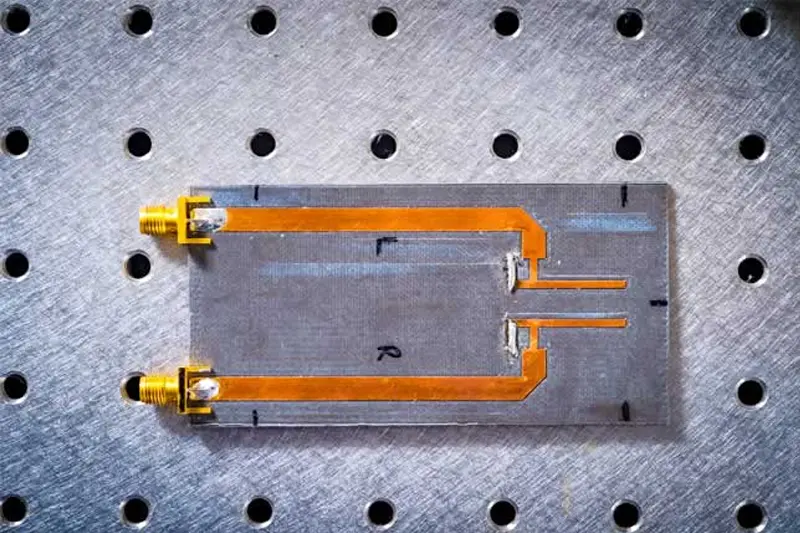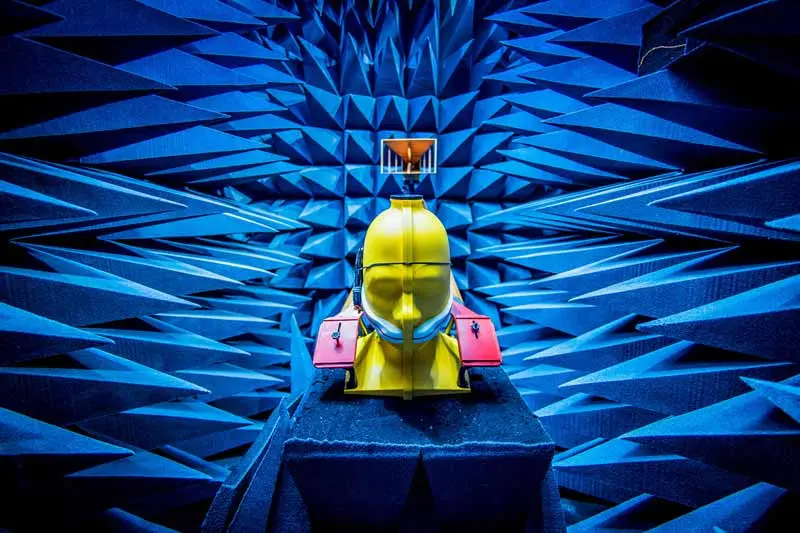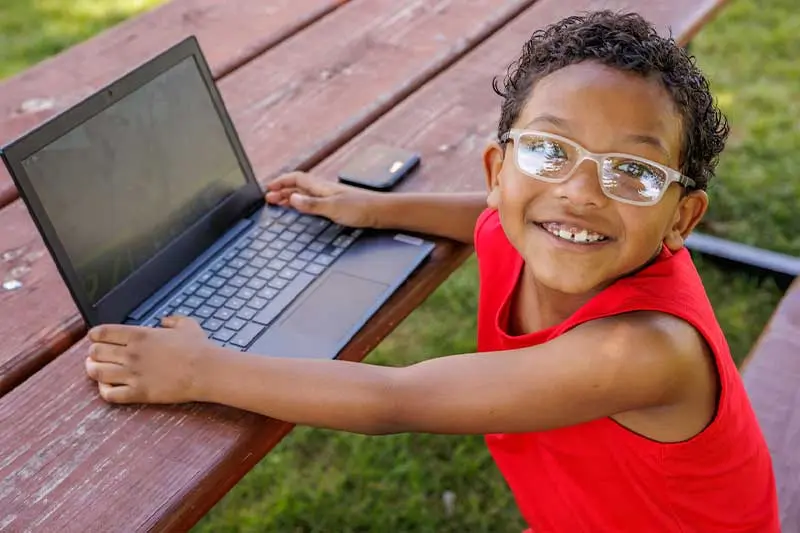Every day, people use mobile devices to communicate, stream video, check the weather, navigate, play games, and use thousands of other apps. Only in the most recent decades have these technologies become more accessible. Wireless technology also underlies radio astronomy, satellites, television and radio broadcasting, geolocation and navigational services, and remote sensing.
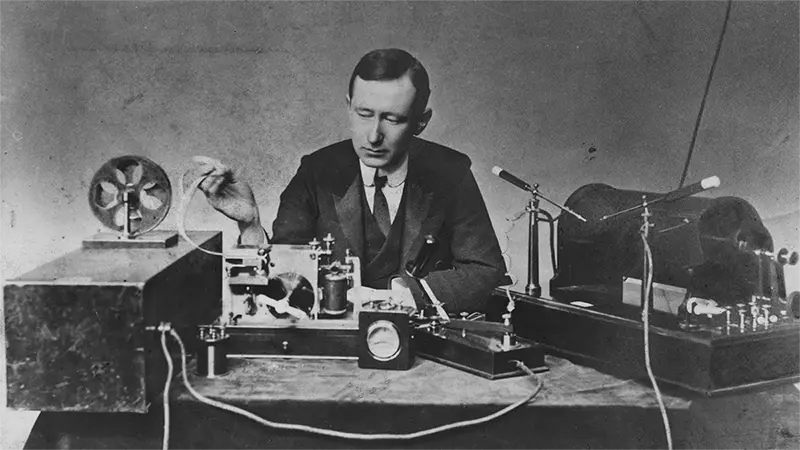
The original experiments that made the wireless services used every day are not as old as some might think. In fact, it was just 125 years ago that the first known long-range wireless transmission in the United States was made on the campus of the University of Notre Dame.
The road to the first known long-distance US transmission
In Italy during late 1894 and early 1895, Italian inventor Guglielmo Marconi was experimenting with transmitting radio signals over gradually greater distances. He found that his signals traveled and were received even from inside a building to the outdoors, with the windows and doors both open and closed. The discovery encouraged Marconi and his team. He worked on his equipment, studying other innovators of the day, and gradually increased the transmission distance to a mile. He would later move to Britain to continue his experiments.
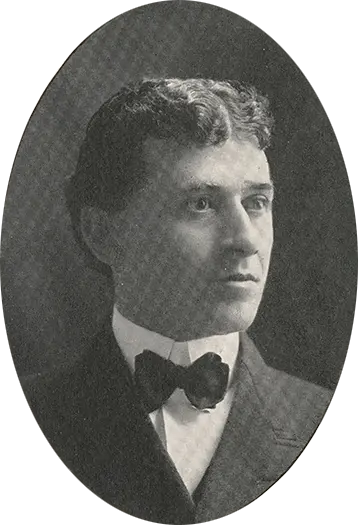
In April 1899, building on Marconi’s successes, Notre Dame Professor Jerome Green and his assistants began building their own transmission equipment. They started the same way Marconi did, by sending signals from rooms within the Science Hall, which today is LaFortune Student Center, and progressed to sending signals from the Science Hall to Sorin Hall on campus. According to an article in Notre Dame Scholastic on April 22, 1899, Green was determined to have his assistants at the forefront of radio transmission technology.
“He has had them working all this week on the Marconi wireless telegraphy,” the article reads. “So far as we can learn they have been more successful in operating here thus far than others have been in any other institution in America.”
These experiments caught regional attention. “Words Fly Through Air: Test of Wireless Telegraphy at South Bend, Indiana, Proves a Complete Success” reads the headline of the Chicago Daily News’ April 18, 1899, edition. In this article Green said, “It is the first time that successful experiments have been performed with apparatus which was not imported from foreign countries for the purpose. Of course, I feel the least bit proud to think I am the first to make the equipment in this country. Perhaps I am claiming an honor which does not belong to me, but if there is any other person in this country who has done the work with his own machinery I have not heard of him.”
The distance of successful transmissions continued to grow, and on April 19, Green and his team used the Basilica of the Sacred Heart’s tower to transmit a long-distance signal. Green hung an antenna, made of 150 feet of wire, near the top of the 218-foot-tall spire. He and his team used a Hertz wave transmitter, which he and his assistants constructed.
The transmission bridged Notre Dame and Saint Mary’s Academy, which today is Saint Mary’s College, traveling more than a mile through the air over St. Mary’s Lake and the woods between the two schools.
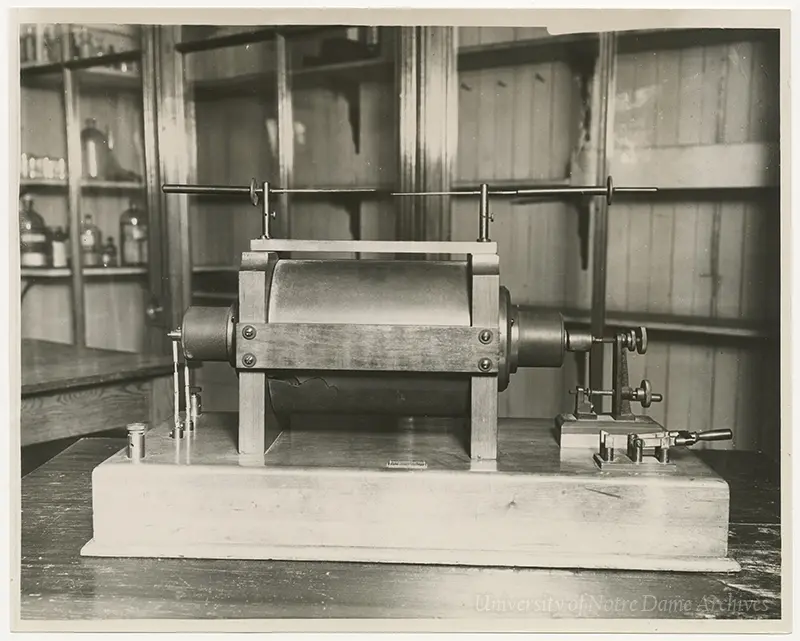
Green’s team worked with Sister M. Antonine (Farmer), C.S.C., an English and physics teacher at Saint Mary’s Academy who encouraged and led the study of science for women attending the academy. She and her students received the transmission using a Marconi coherer, a device used to detect radio waves. Sister Antonine and Professor Green were colleagues who collaborated on experiments at the time.
The event is detailed in the April 22, 1899, issue of Notre Dame Scholastic:
“It took two or three hours to get everything ready, and everyone at the school was anxiously waiting for the trial to be made. When everything was finished and the operator pressed the key and sent a signal, a reply came back from the Academy saying that it had been received all right. This is the farthest distance a message has been sent in this country as far as we know, and the boys in the scientific department feel elated over their success. Professor Green is preparing a new apparatus, and will make further experiments in the near future.”
Ironically, the wireless transmission was confirmed to be a success between Green’s and Antonine’s teams using a landline telephone call between campuses.
The University of Notre Dame’s official account of the experiment is thought to be directly from the November 1934 issue of the Saint Mary’s College alumnae magazine, Courier. It was written by Marion McCandless, an 1890 alumna and a student of Sister Antonine who was studying physics at Saint Mary’s Academy.
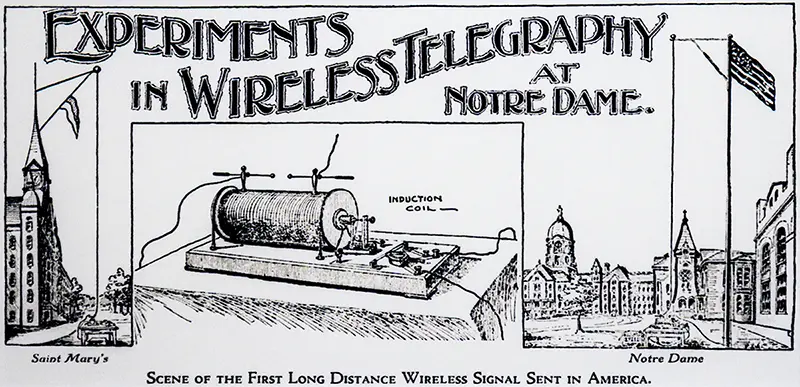
“While the exact record is lost, we believe that the letter ‘O’ was sent in Morse code from Notre Dame’s campus,” said Jonathan Chisum, an associate professor in the Department of Electrical Engineering. The letter “O” in Morse code is easy to interpret clearly on the receiving end, as it is composed of three longer presses of the telegraph key, known as dashes (– – –).
After news of Green’s successful experiment, the team moved its transmission destination from Saint Mary’s to another South Bend landmark: the tower of St. Hedwig Catholic Church, about three miles away. This experiment was again a success and Green was invited to Chicago by the Chicago Tribune to replicate the experiments on a larger scale, where he was again successful.
The Sunday Chronicle, a Chicago newspaper, on April 23, 1899, contained an article about “Receiving and Sending Pictures by Wire.” That same day, the Chicago Sunday Tribune featured an article about Green’s success, titled “Marconi Test is a Success: Telegraphic Messages Sent Without Wires from Tribune to Marquette Building. Jerome Green In Charge. First Proof That the System Can Be Used in a Large City Among Steel Structures.”The pieces outlined the importance of the homemade equipment and the new distances of transmission being achieved.
Green continued to teach and conduct research at the University of Notre Dame until 1915, when he moved to San Diego. There he taught in several high schools and colleges, and served as professor of electrical engineering and dean of faculty at the Pacific Technical University. He retired in 1927 and died in 1943.
Wireless innovations take root at Notre Dame
Since Green’s initial forays into wireless research at Notre Dame, the University has built on his legacy and continued to invest in this essential area of research.
Notable faculty who have worked in wireless technology and research at the University of Notre Dame since the time of Green include James Massey, the former Frank M. Freimann professor of electrical engineering, who made advancements in digital communications in the fields of information theory, coding theory, and cryptography; Dan Costello, the Bettex Chair Professor Emeritus of Electrical Engineering, whose research in digital communications focused on error control coding and coded modulation; Yih-Fang Huang, professor of electrical engineering and former senior associate dean of engineering for education and undergraduate programs; and Thomas Fuja, professor of electrical engineering and faculty director of iNDustry Labs, Notre Dame’s platform collaboration with local industries. Costello, Huang, and Fuja also served as successive chairs of the Department of Electrical Engineering and hired a number of additional faculty with wireless communications and networking interests. Those hires include Jonathan Chisum, associate professor of electrical engineering; Monisha Ghosh, professor of electrical engineering and the electrical engineering director of diversity, equity, and inclusion; Martin Haenggi, the Frank M. Freimann professor of electrical engineering; Bertrand Hochwald, the Frank M. Freimann professor of electrical engineering and co-director of the Wireless Institute; Nick Laneman, professor of electrical engineering, co-director of the Wireless Institute, and director of SpectrumX, the U.S. National Science Foundation (NSF) Spectrum Innovation Center; and Thomas Pratt, research professor, electrical engineering.
Since 2010, the University’s growing research in this field has been organized through the Wireless Institute in the College of Engineering. The institute was established to leverage Notre Dame’s extensive experience, tackle important interdisciplinary problems involving both radio technologies and spectrum policy, and broaden the University’s impact on the world. Under the leadership of co-directors Hochwald and Laneman, the institute has served as an incubator for big ideas and large projects involving faculty from various disciplines around the University and the across the country.
Through the Wireless Institute, the faculty created the first NSF Industry University Cooperative Research Center program at Notre Dame, and now leads SpectrumX. SpectrumX is the world’s largest academic hub where radio spectrum stakeholders innovate, collaborate, and contribute to research and spectrum policy with the goal to maximize the social welfare of the radio spectrum itself. The center currently hosts 30 member institutions. This year, SpectrumX will be leading its second annual NSF Spectrum Week in Arlington, Virginia, joining together six spectrum-related events in one location.
The Wireless Institute is also leading the Midwest Wireless Innovation Strategy Development Consortium and a member of the Economic Development Administration (EDA) Tech Hubs program. The consortium will work to grow a network of 21 regional and national partners that are concentrating efforts in wireless technology innovation, commercialization, and workforce training in the Indiana, Michigan, and Illinois region.
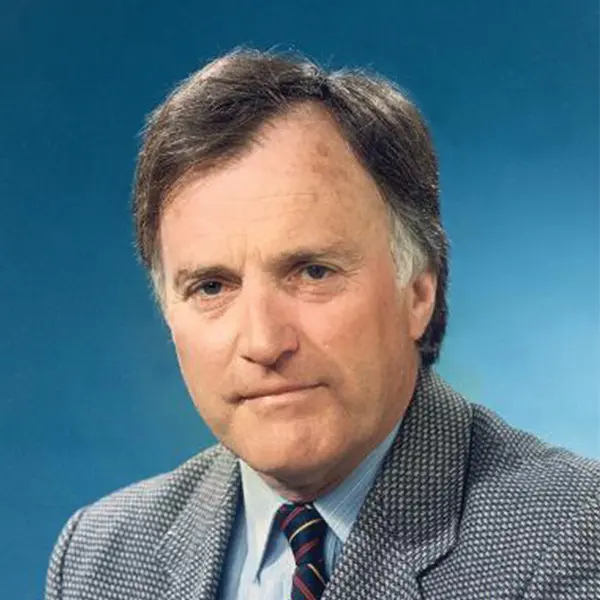
James Massey
Former Frank M. Freimann professor of electrical engineering
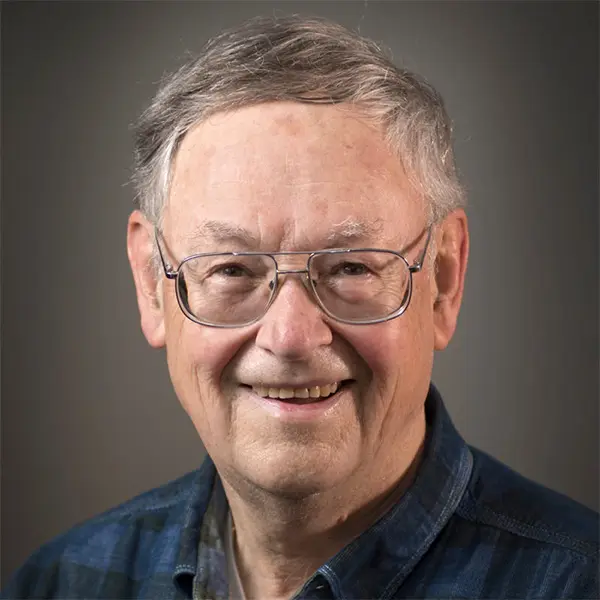
Dan Costello
The Bettex Chair Professor Emeritus of Electrical Engineering
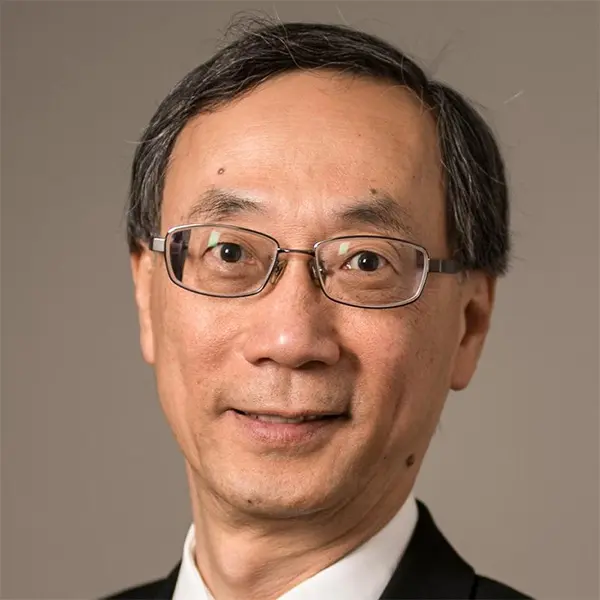
Yih-Fang Huang
Professor of electrical engineering and former senior associate dean of engineering for education and undergraduate programs
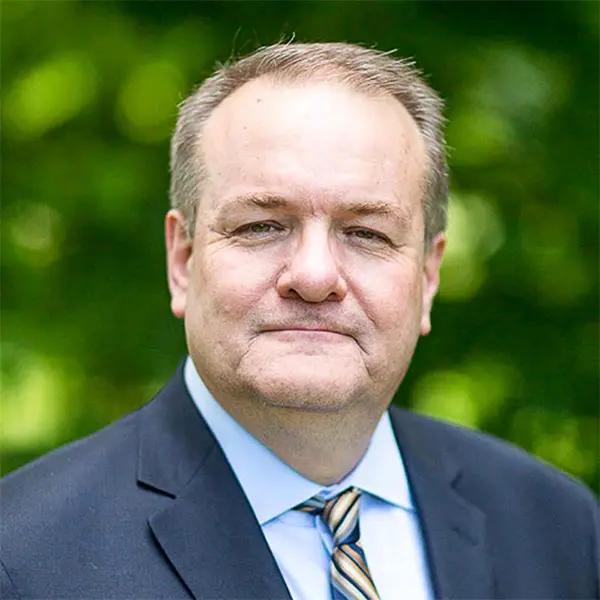
Thomas Fuja
Professor of electrical engineering and faculty director of iNDustry Labs

Jonathan Chisum
Associate professor of electrical engineering
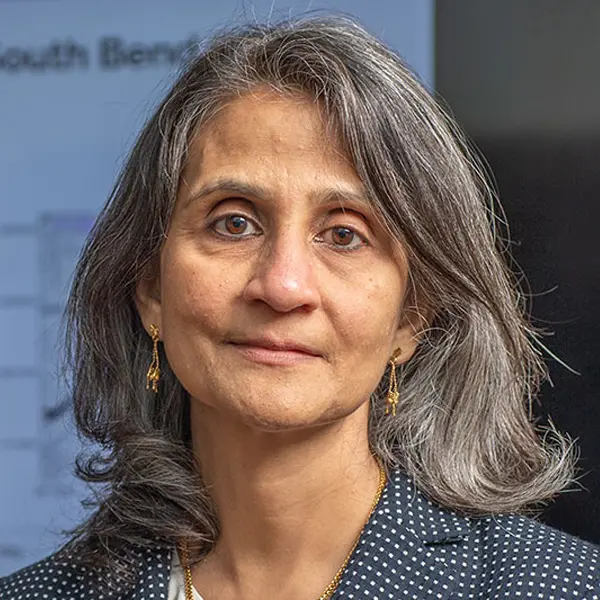
Monisha Ghosh
Professor of electrical engineering and the electrical engineering director of diversity, equity, and inclusion
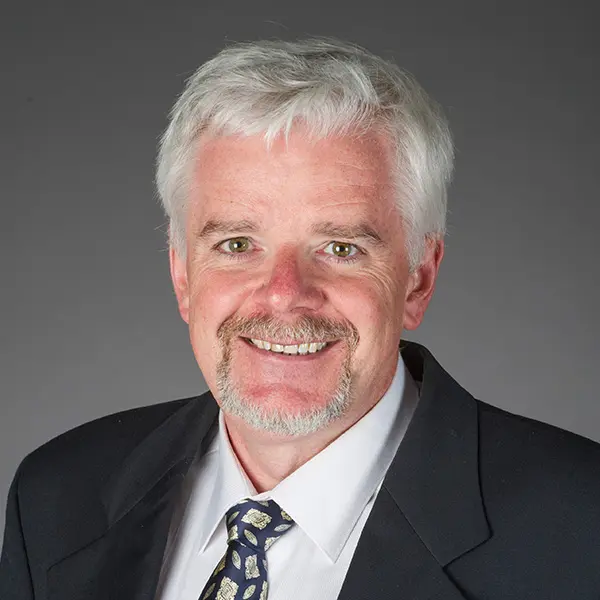
Martin Haenggi
The Frank M. Freimann professor of electrical engineering
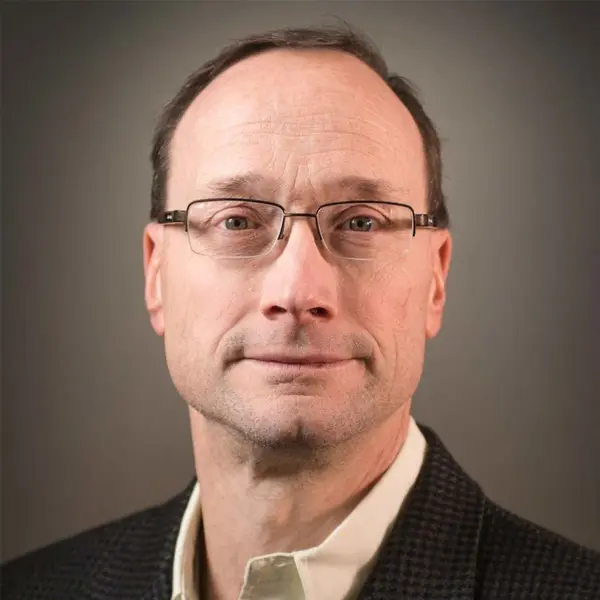
Bertrand Hochwald
The Frank M. Freimann professor of electrical engineering and co-director of the Wireless Institute
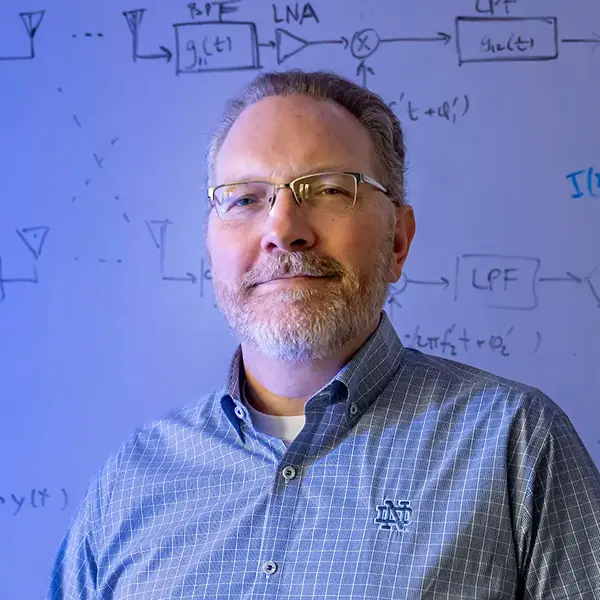
Nick Laneman
Professor of electrical engineering, co-director of the Wireless Institute, and director of SpectrumX, the U.S. National Science Foundation (NSF) Spectrum Innovation Center
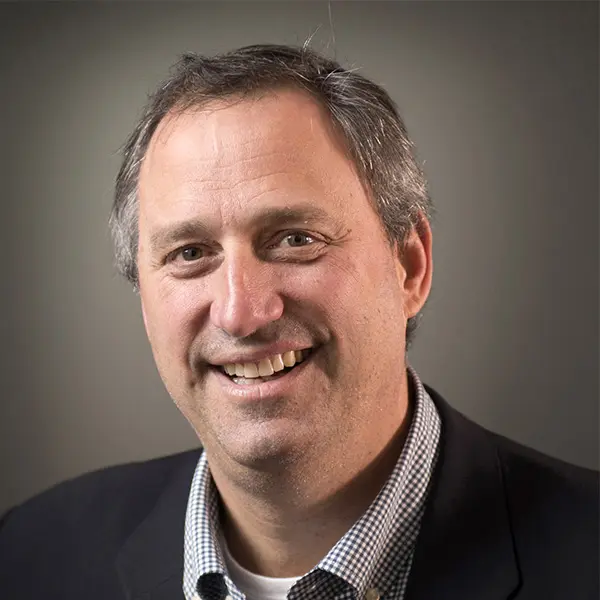
Thomas Pratt
Research professor, electrical engineering
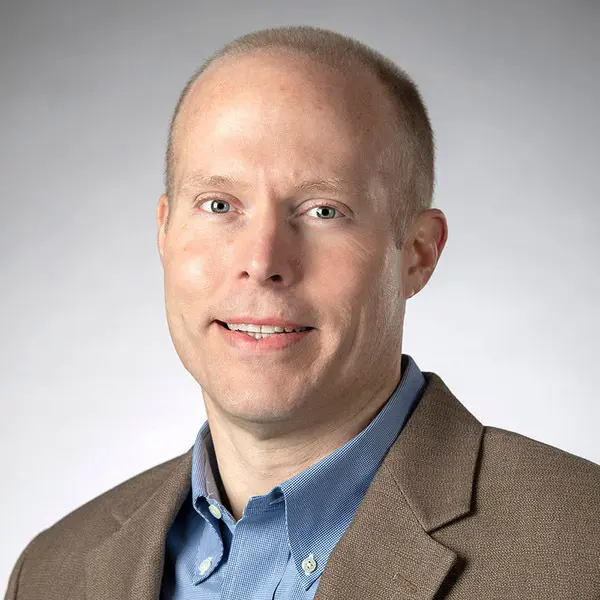
Paul Brenner
Research professor, Senior Associate Director, Center for Research Computing, Professor of the Practice
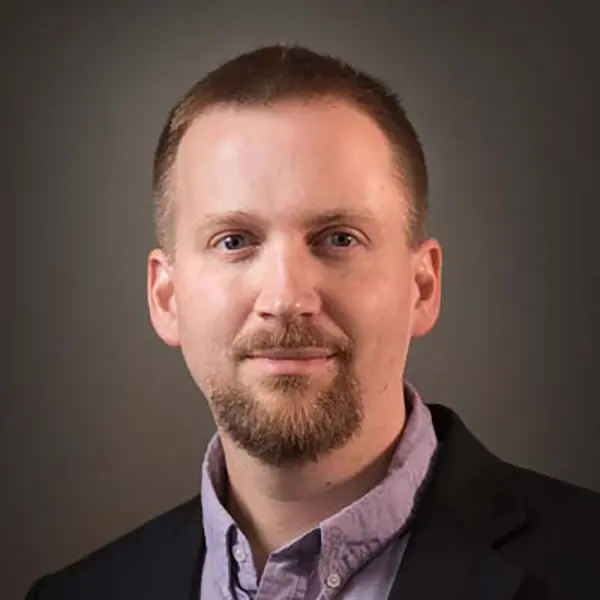
Aaron D. Striegel
Professor, Computer Science and Engineering
Marking 125 years with a re-enactment
On April 19, 2024, 125 years after Green’s successful experiments on the University of Notre Dame’s campus and reception of the signal at Saint Mary’s Academy, faculty, students, and guests from both institutions came together to re-enact the transmissions and raise awareness.
“Notre Dame has been involved since the beginning of wireless technology, when it was in its infancy,” said Chisum, the electrical engineering professor. “There are so many ways wireless technology, stemming from these first transmissions, is used in the everyday lives of civilians, in industry, and for defense purposes. That is why we continue to invest in this area of research and now celebrate its impact.”
In 1899, during the original experiment, Green had to transmit the single Morse code letter at a power level and over a wide frequency band that could not be replicated today without impacting others. If a transmitter like Green’s were used today, it would interrupt cellular, Wi-Fi, and emergency-responder wireless networks, because it used so much power across such a wide range of frequencies in the radio spectrum.
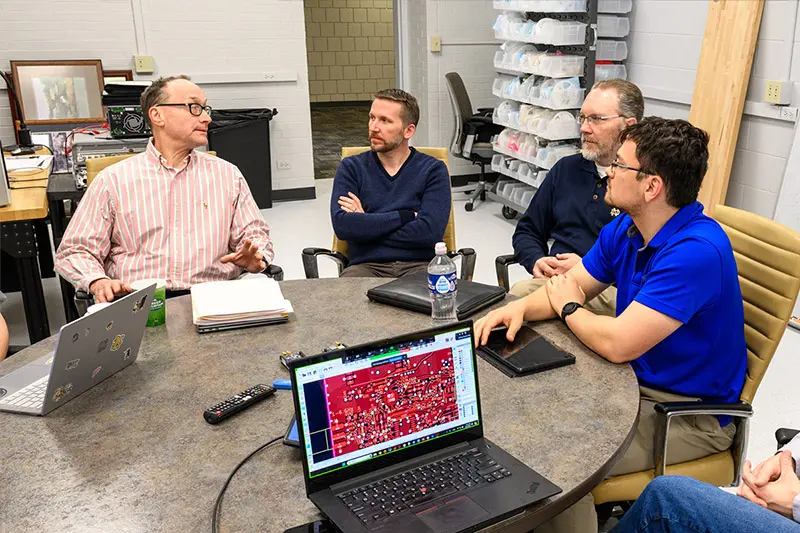
In the modern-day re-enactment, Chisum and his team had to conduct their own experiments to find the best ways to transmit and receive the signal. In 1899, there was only one transmitter and only one receiver accessing the radio spectrum in the entire geographic area. Green was free to transmit at very high power across a wide range of frequencies that today are used for critical infrastructure.
With only one transmitter active at the time, the receiver at Saint Mary’s could be triggered based on signals at any frequency. Through early outdoor tests, Chisum and his colleagues quickly realized that the coherer receiver would be constantly activated by the many other wireless signals using the spectrum today, rendering communications impractical. They would have to find a way to avoid producing interference to other receivers and to protect their receiver from being interfered with by other transmitters.
Chisum and Hochwald, a co-director of the Wireless Institute, developed a spark-gap transmitter similar to the one used by Green and Marconi, but found that it violated Federal Communications Commission (FCC) regulations. Even filtering the transmitter to open bands was not sufficient. Ultimately, they decided to attempt to transmit their signal in a low-frequency amateur radio band allocation on which the FCC allows high-powered transmissions.
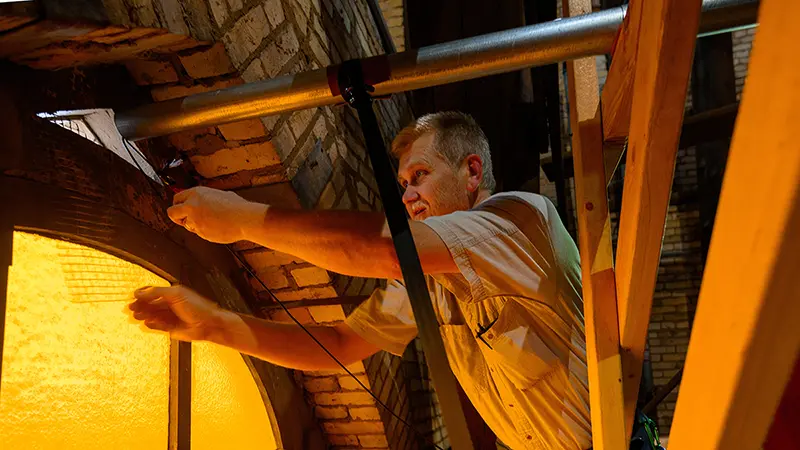
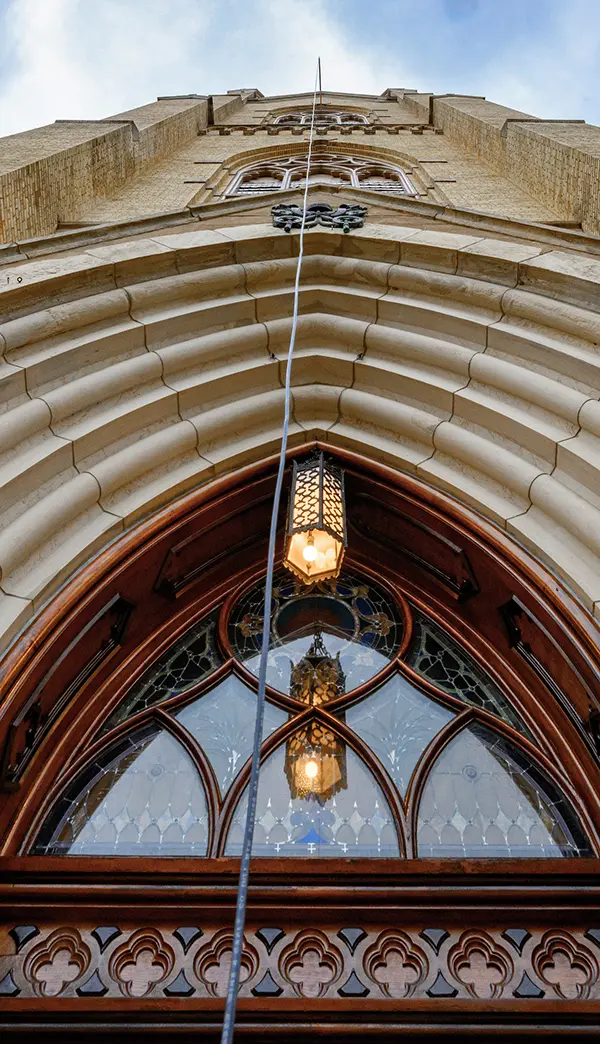
The professors toured the Basilica of the Sacred Heart and found an opening to use as a pass-through to the exterior of the building to drop an antenna wire around 150 feet down the length of the tower, as Green did. Across US 933 at Saint Mary’s campus, a 50-foot antenna was hung from the roof of the Bertrand Hall by faculty and student assistants. The direct transmit path between the two points is 1.1 miles, and from a radio-wave propagation perspective, is very similar today as it was in 1899, crossing over the lakes and a small wood.
On the morning of the re-enactment, Chisum directed the team composed of faculty and staff members and students, including Jack Corrao, a junior, majoring in electrical engineering at Notre Dame, and Brianna Dewey, a senior in physics at Saint Mary’s College and a junior in Electrical Engineering at Notre Dame, to complete the transmission. As the transmission was set up, Chisum gave some historical context on early scientists who made discoveries that fueled the creation of wireless telegraphy.

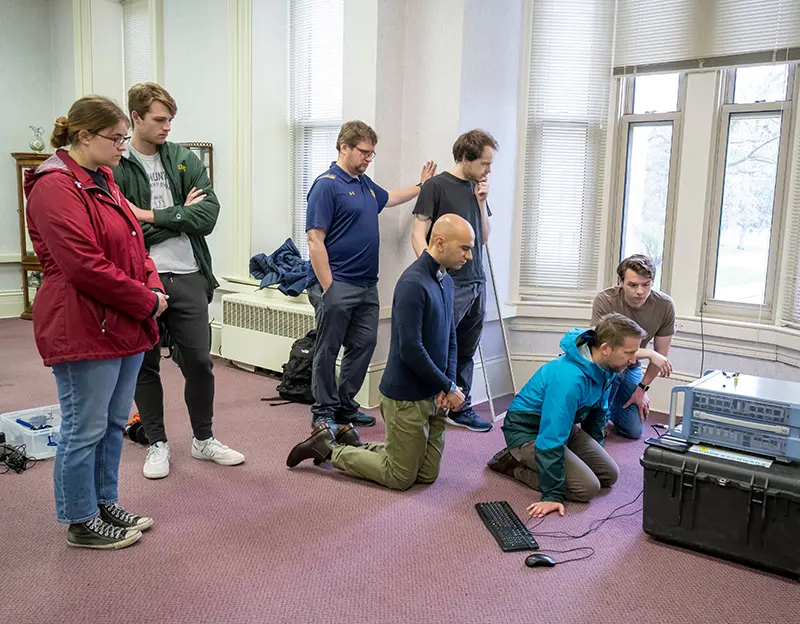
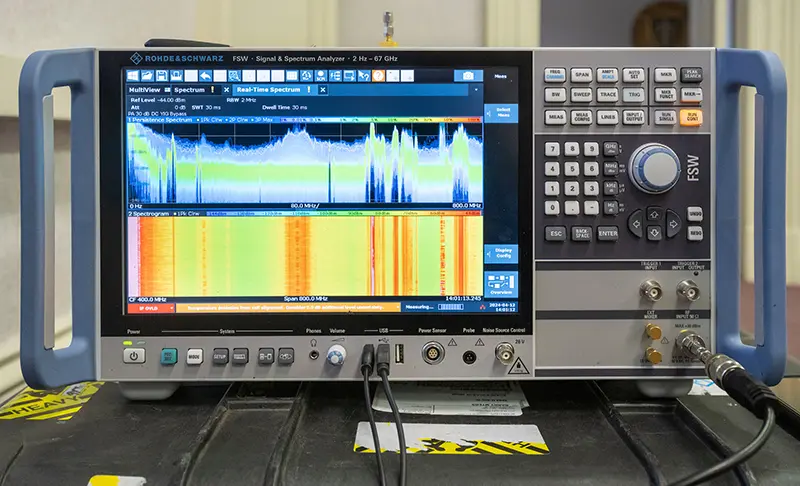
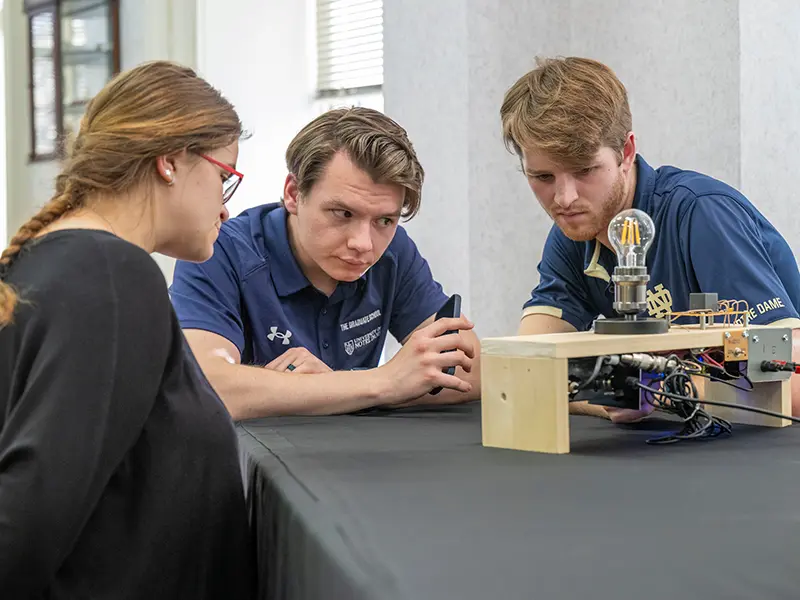
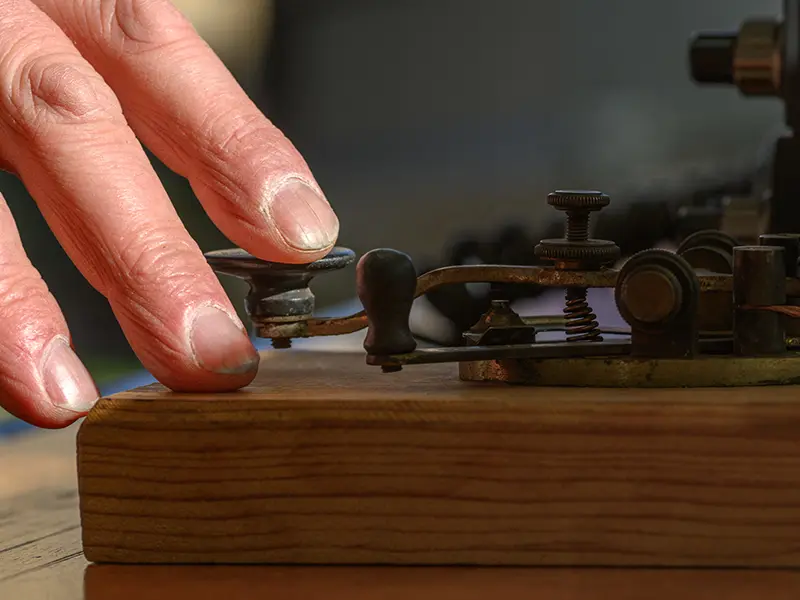
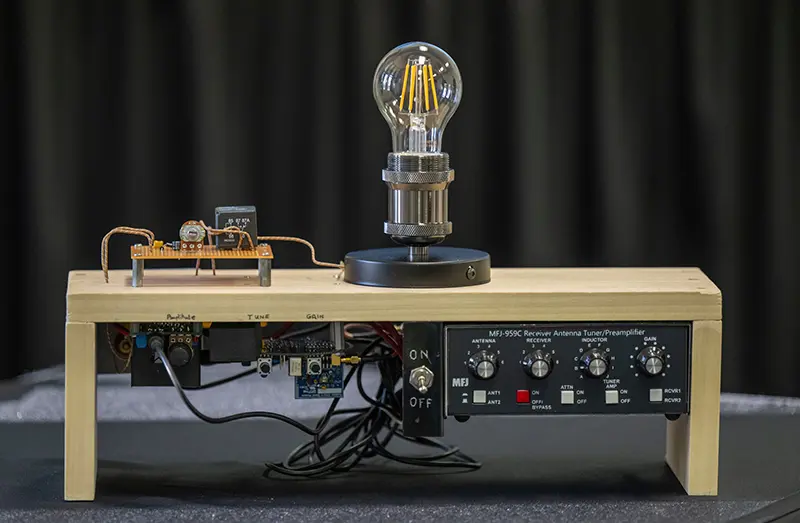
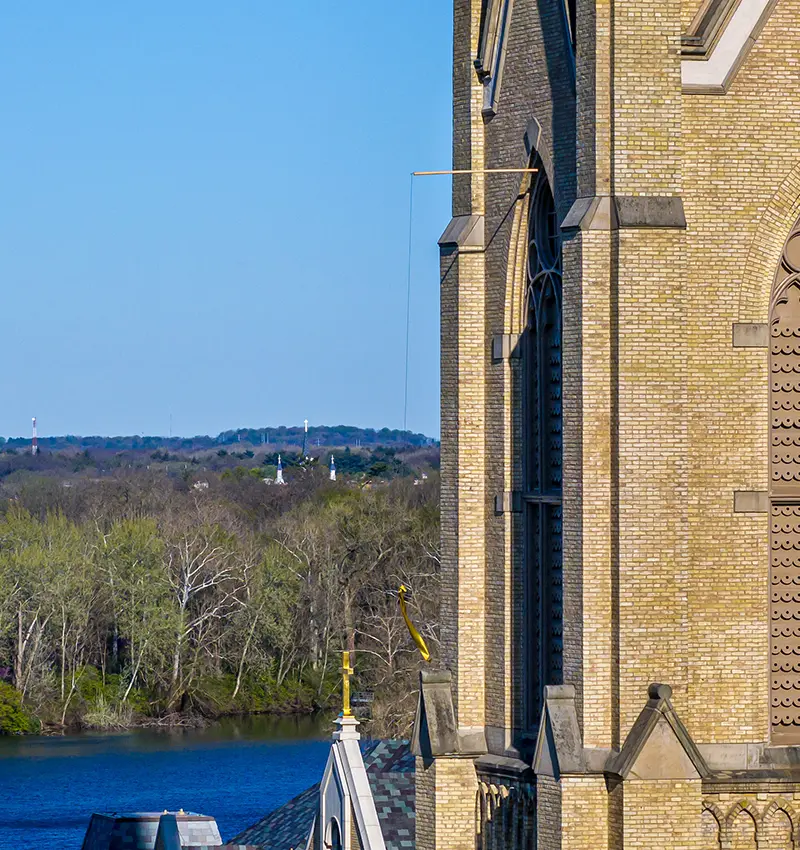
In addition to celebrating 125 years of wireless research, this event also highlights the longstanding partnership between Notre Dame and Saint Mary’s. The two schools continue their ongoing relationships through a partnership in science, technology, engineering, and math (STEM) fields that includes a Five-Year Dual Degree Engineering Program. The program starts with students beginning their studies at Saint Mary’s and progressively building their studies into a blend between the two schools.
“Science has always been at the core of the education at Saint Mary’s. What Sister Antonine understood from the beginning was that having a strong relationship with Notre Dame would broaden our students’ opportunities and perspectives,” said Cassie Majetic, professor of biology, chair of the Department of Environmental Studies, and director of the Division of Science, Technology, Engineering, and Mathematics (STEM) at Saint Mary’s College. “From that original, historic transmission—an event imagined between two scientists and friends—through today with the continued academic opportunities between our two campuses, we see this spirit of collaboration between our two institutions confirmed and solidified. We are part of a shared community committed to advancing the STEM fields.”
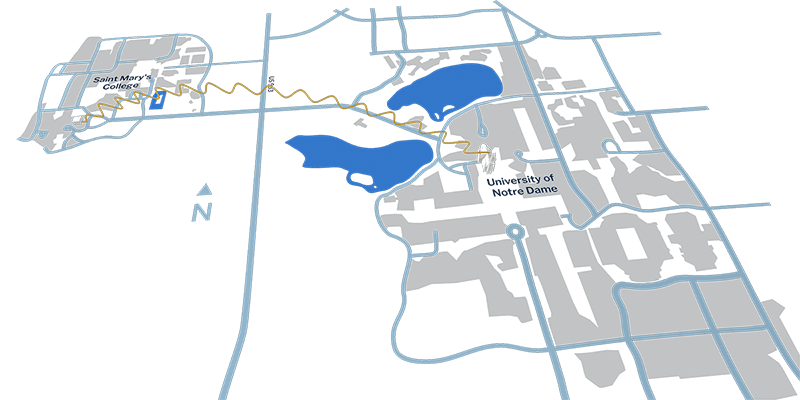
The future of wireless is still being written in South Bend
“Even though the first known wireless transmission occurred 125 years ago, it is only in the last 50 years that consumers have truly benefited from wireless connectivity,” said Monisha Ghosh, professor of electrical engineering.
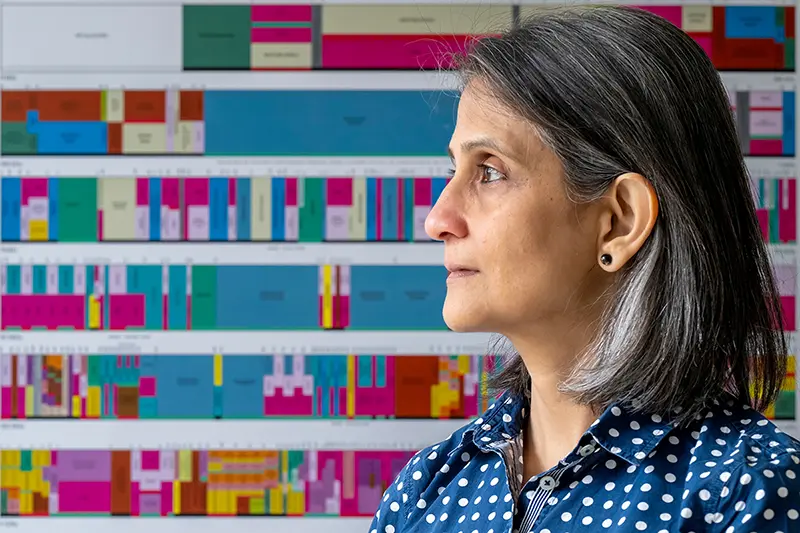
The electromagnetic spectrum has become quite crowded since the first known wireless communications. Ghosh explained that this means we need to manage spectrum more effectively and share between different use cases without causing harmful interference. This is challenging because some of the systems requiring spectrum resources are critical to national security.
“In a suburban area with a lot of land, one can build a neighborhood of well-spaced-out single-family homes,” Ghosh said. “In a dense, urban environment, however, where land is scarce, one needs to build vertically. Hence, you layer different uses into the same bit of space. Spectrum is similar: when many use-cases are competing for the same spectrum, using technology to share spectrum effectively in time, frequency, and/or space is becoming increasingly important.”
Considering the need for future growth and investment in spectrum research, Nick Laneman, co-director of the Wireless Institute and director of SpectrumX, said now is a pivotal time to both learn from the past and work with collaborators to innovate for the future. “The success of all of these technologies and the applications of wireless is now creating this challenge of balancing the many uses of the radio spectrum. The timing is fascinating because of the discussion happening right now around the US National Spectrum Strategy and how SpectrumX can contribute,” he said. “At Notre Dame, we are deeply embedded in that discussion and related research projects. Through the center and through other initiatives we are involved in, we are working to make academic research more useful to policymakers. It is a pivotal moment in wireless innovation and regulation in the United States.”
The University of Notre Dame, working with its many partners including Saint Mary’s College, continues to be at the forefront of wireless technology, policy, and research. As the University celebrates 125 years of wireless, the researchers look toward the next 125 years of innovation.
